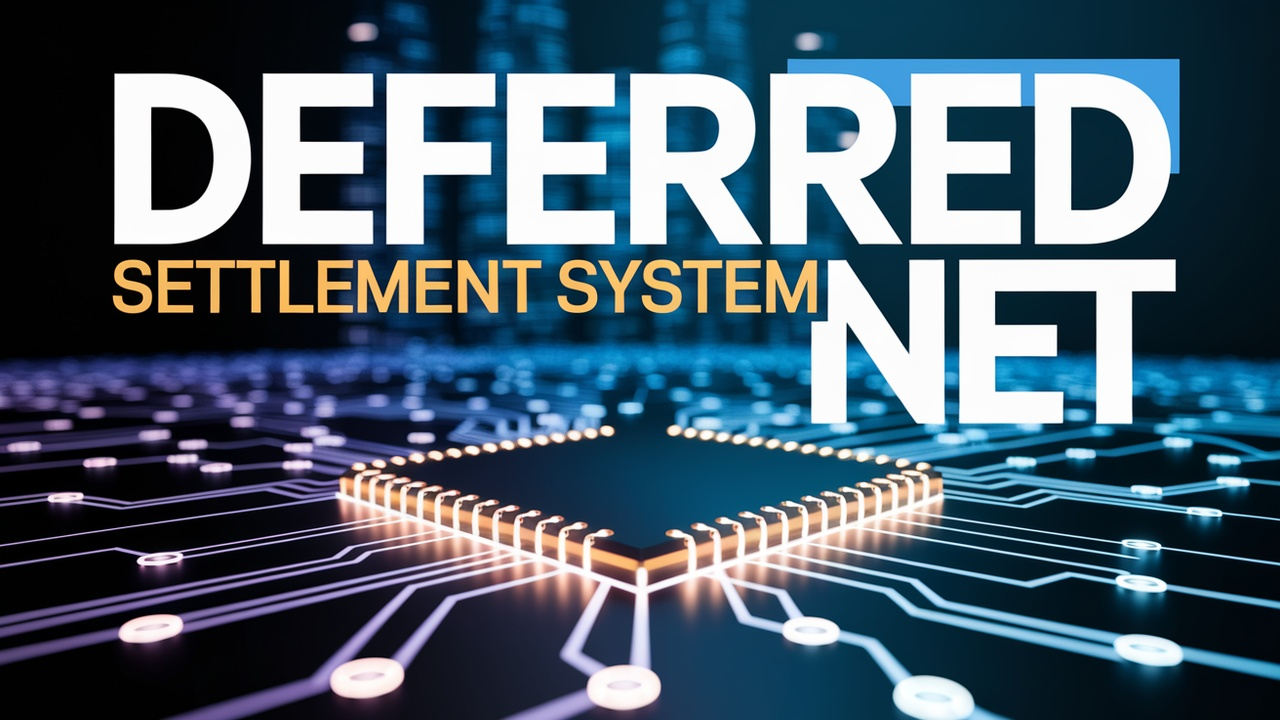DNSS Full Form - Deferred Net Settlement System
by Shashi Gaherwar
0 1982
Understanding the Deferred Net Settlement (DNS) System: Efficient Financial Transactions
The Deferred Net Settlement (DNS) System is a payment mechanism that aggregates and settles financial transactions in batches at specific intervals, enhancing efficiency and reducing liquidity needs in banking and financial markets.

This article explores the mechanism, benefits, challenges, and future trends of the DNS System.
What is the Deferred Net Settlement System?
The Deferred Net Settlement (DNS) System processes multiple transactions between banks by netting them and settling the net amount at designated times, widely used in interbank payments and retail networks.
How Does the Deferred Net Settlement System Work?
The DNS operates through:
- Transaction Accumulation: Records transactions throughout the day for batch processing.
- Netting of Transactions: Offsets payments to calculate a net settlement amount.
- Settlement: Finalizes net transfers via a central bank or clearinghouse.
Benefits of the Deferred Net Settlement System
The DNS offers significant advantages:
- Efficiency in Processing: Reduces transaction movements for streamlined banking operations.
- Lower Liquidity Requirements: Minimizes reserve needs for settlements.
- Cost-Effective: Lowers costs compared to real-time settlements.
- Financial Stability: Ensures smooth processing of large-scale payments.
- High Transaction Volumes: Supports retail and e-commerce payments.
Challenges of the Deferred Net Settlement System
Challenges include:
- Settlement Risks: Potential defaults before netting due to bank failures.
- Time Delays: Slower than real-time systems like RTGS.
- Systemic Risks: System failures could impact multiple banks.
- Regulatory Compliance: Adhering to AML laws and banking regulations.
Comparison: Deferred Net Settlement System vs. Real-Time Gross Settlement
Key differences:
- Processing: DNS uses batch netting; RTGS processes individual transactions instantly.
- Settlement Timing: DNS delays until intervals; RTGS is immediate.
- Liquidity: DNS requires less liquidity than RTGS.
- Risk: DNS has moderate risk; RTGS has lower settlement risk.
- Use Cases: DNS for retail; RTGS for large-value transfers.
Examples of Deferred Net Settlement Systems Worldwide
Notable DNS systems include:
- Automated Clearing House (ACH) – USA: Handles payroll and bill payments.
- National Automated Clearing House (NACH) – India: Processes bulk payments.
- STEP2 – Europe: Clears retail payments via EBA.
- CHAPS – UK: Includes DNS elements for some transactions.
Future Trends in Deferred Net Settlement Systems
Emerging trends include:
- Blockchain and DLT: Enhances transparency with smart contracts.
- AI-Driven Risk Management: Improves fraud detection.
- Faster Settlement Cycles: Reduces settlement windows.
- Global Standardization: Harmonizes cross-border payments.
The Deferred Net Settlement (DNS) System is a cornerstone of efficient payment processing, offering cost-effective solutions for high-volume transactions. Despite challenges like settlement risks, advancements in blockchain and AI will enhance its security and efficiency, ensuring its relevance in the evolving financial landscape.
Further Learning Resources
If you’re passionate about building a successful blogging website, check out this helpful guide at Coding Tag – How to Start a Successful Blog. It offers practical steps and expert tips to kickstart your blogging journey!
For dedicated UPSC exam preparation, we highly recommend visiting www.iasmania.com. It offers well-structured resources, current affairs, and subject-wise notes tailored specifically for aspirants. Start your journey today!

Share:








Comments
Waiting for your comments